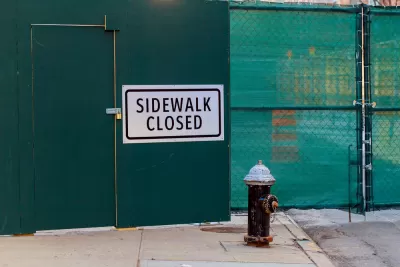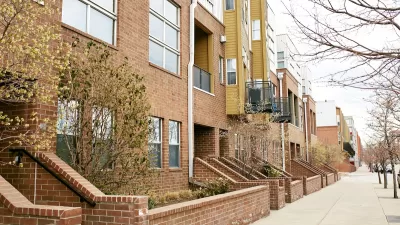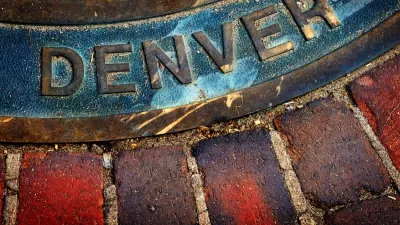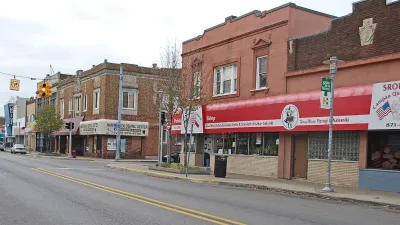Upgrading sidewalks on the way to transit stations could make a difference in cities facing declining transit ridership.

This fall, Denver voters will consider a $937 million infrastructure bond that would include $30 million to improve sidewalks near light rail stations, bus stops, and bikeshare stations.
As TransitCenter's The Connection points out, the Sidewalks to Transit program won't produce nearly enough money to fix the problem—that would take more like $475 million, given that 37 percent of Denver sidewalks near transit are "either missing or too narrow to walk on comfortably."
But, combined with small quick fixes, it could be a good start to addressing a problem that The Connection says many cities don't pay enough mind: "Because most riders in high ridership systems walk to catch buses and trains, transit stops must be supported by well-designed streets and sidewalks ... Yet many cities in America have built streets without sidewalks, or allowed property owners to encroach on or neglect them."
Only two other cities—Nashville and Los Angeles—explicitly fund "walking to transit" programs, the blog notes.
FULL STORY: Denver's (Side)walks to Transit

Study: Maui’s Plan to Convert Vacation Rentals to Long-Term Housing Could Cause Nearly $1 Billion Economic Loss
The plan would reduce visitor accommodation by 25,% resulting in 1,900 jobs lost.

North Texas Transit Leaders Tout Benefits of TOD for Growing Region
At a summit focused on transit-oriented development, policymakers discussed how North Texas’ expanded light rail system can serve as a tool for economic growth.

Why Should We Subsidize Public Transportation?
Many public transit agencies face financial stress due to rising costs, declining fare revenue, and declining subsidies. Transit advocates must provide a strong business case for increasing public transit funding.

How to Make US Trains Faster
Changes to boarding platforms and a switch to electric trains could improve U.S. passenger rail service without the added cost of high-speed rail.

Columbia’s Revitalized ‘Loop’ Is a Hub for Local Entrepreneurs
A focus on small businesses is helping a commercial corridor in Columbia, Missouri thrive.

Invasive Insect Threatens Minnesota’s Ash Forests
The Emerald Ash Borer is a rapidly spreading invasive pest threatening Minnesota’s ash trees, and homeowners are encouraged to plant diverse replacement species, avoid moving ash firewood, and monitor for signs of infestation.
Urban Design for Planners 1: Software Tools
This six-course series explores essential urban design concepts using open source software and equips planners with the tools they need to participate fully in the urban design process.
Planning for Universal Design
Learn the tools for implementing Universal Design in planning regulations.
Ascent Environmental
Borough of Carlisle
Institute for Housing and Urban Development Studies (IHS)
City of Grandview
Harvard GSD Executive Education
Toledo-Lucas County Plan Commissions
Salt Lake City
NYU Wagner Graduate School of Public Service





























